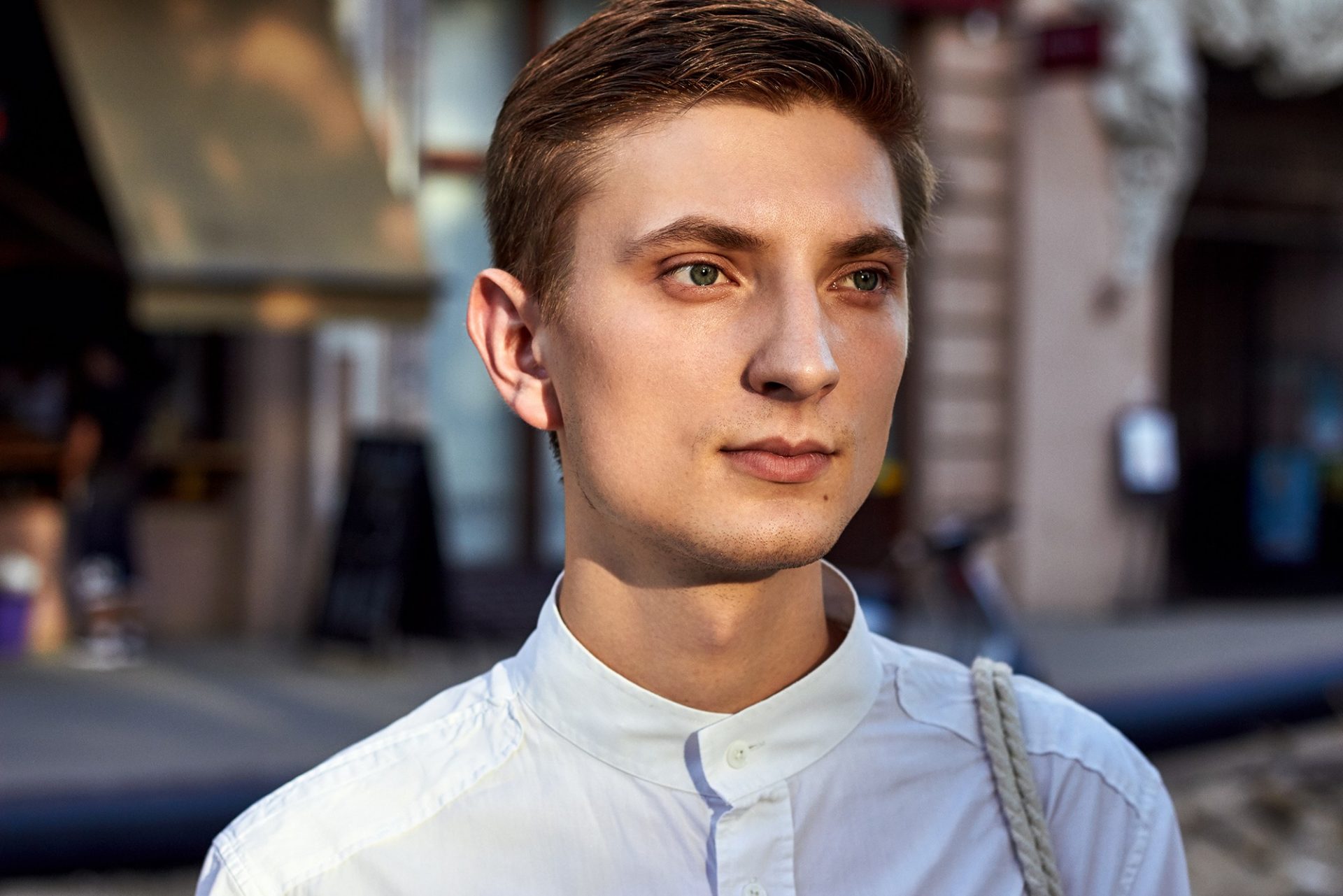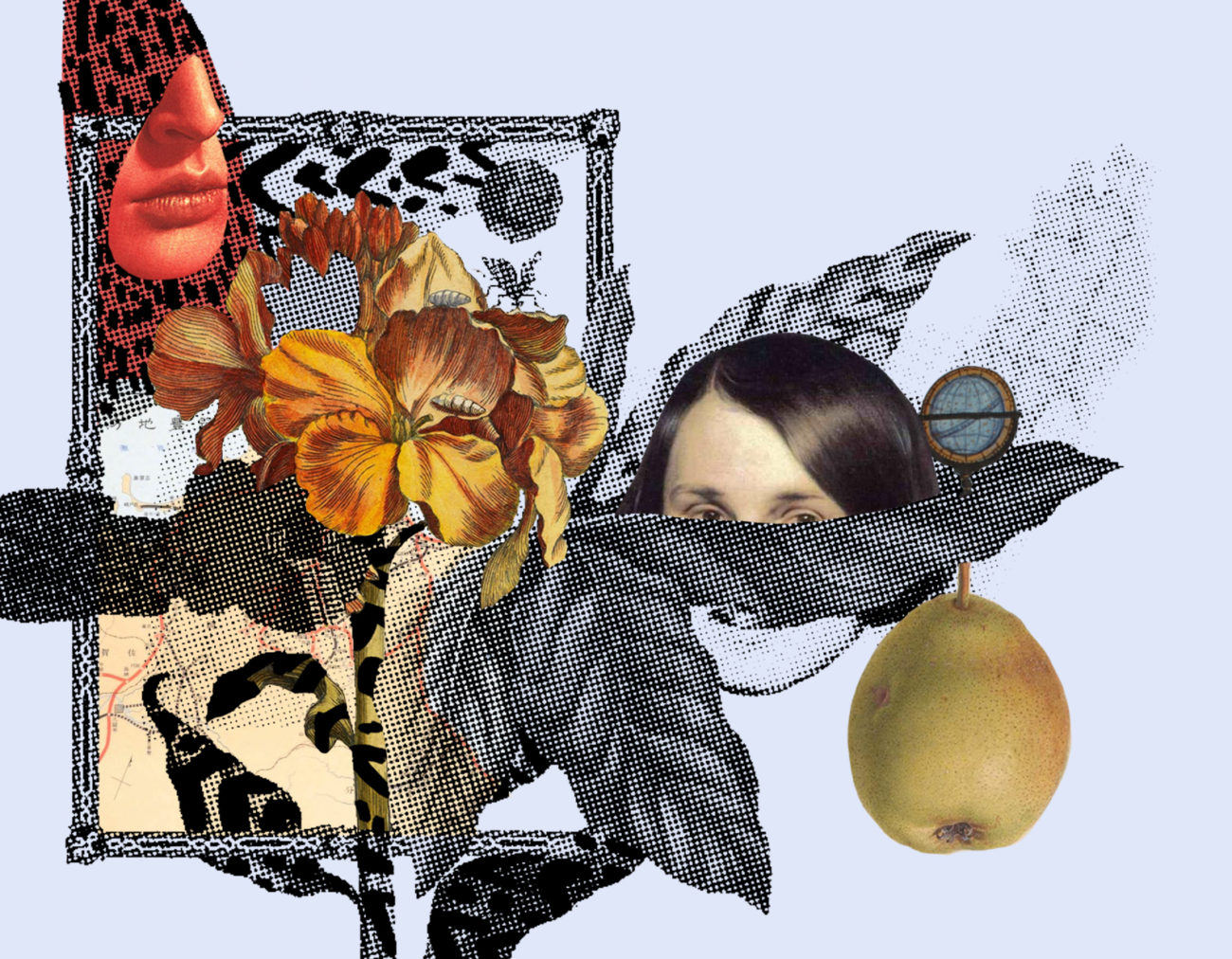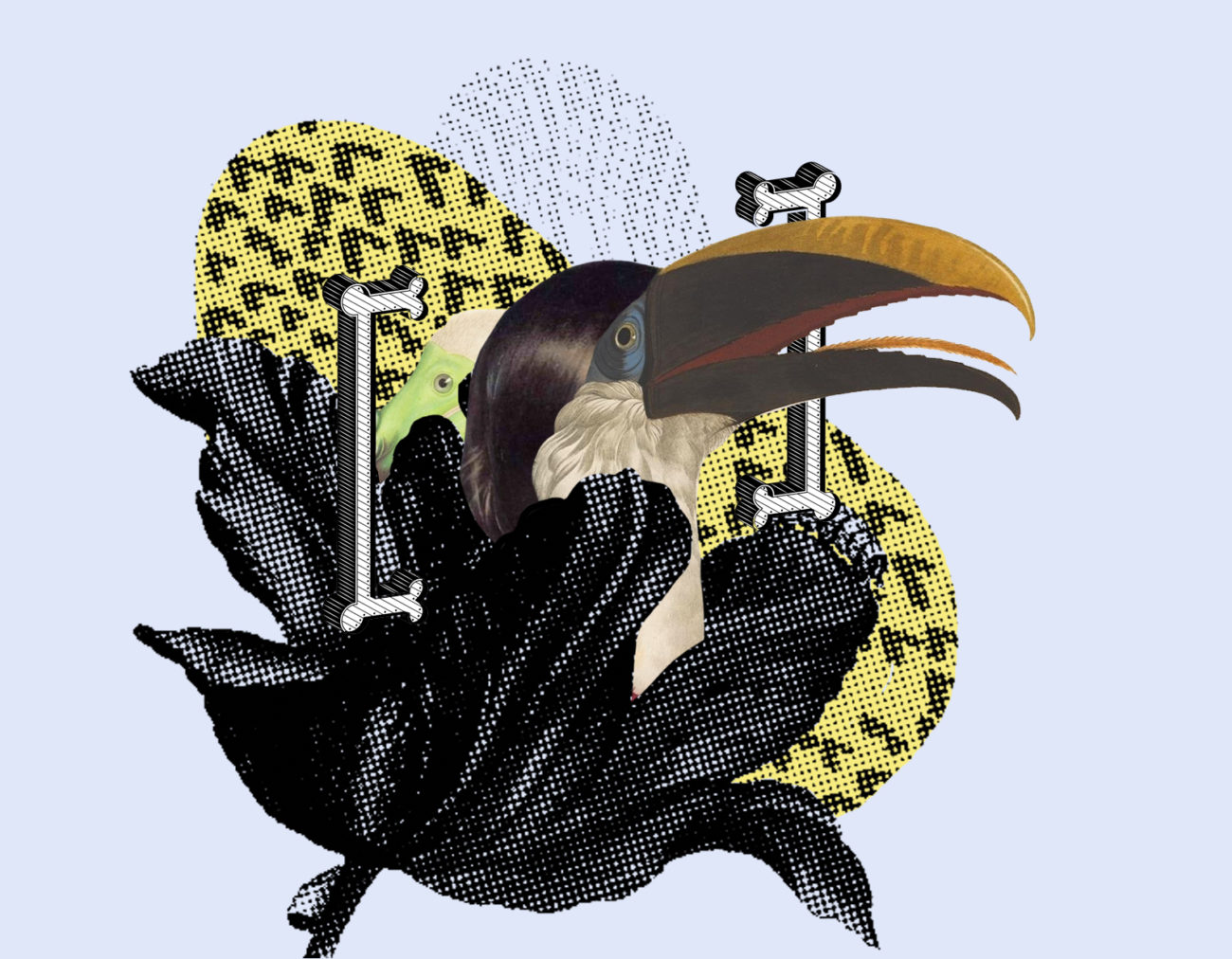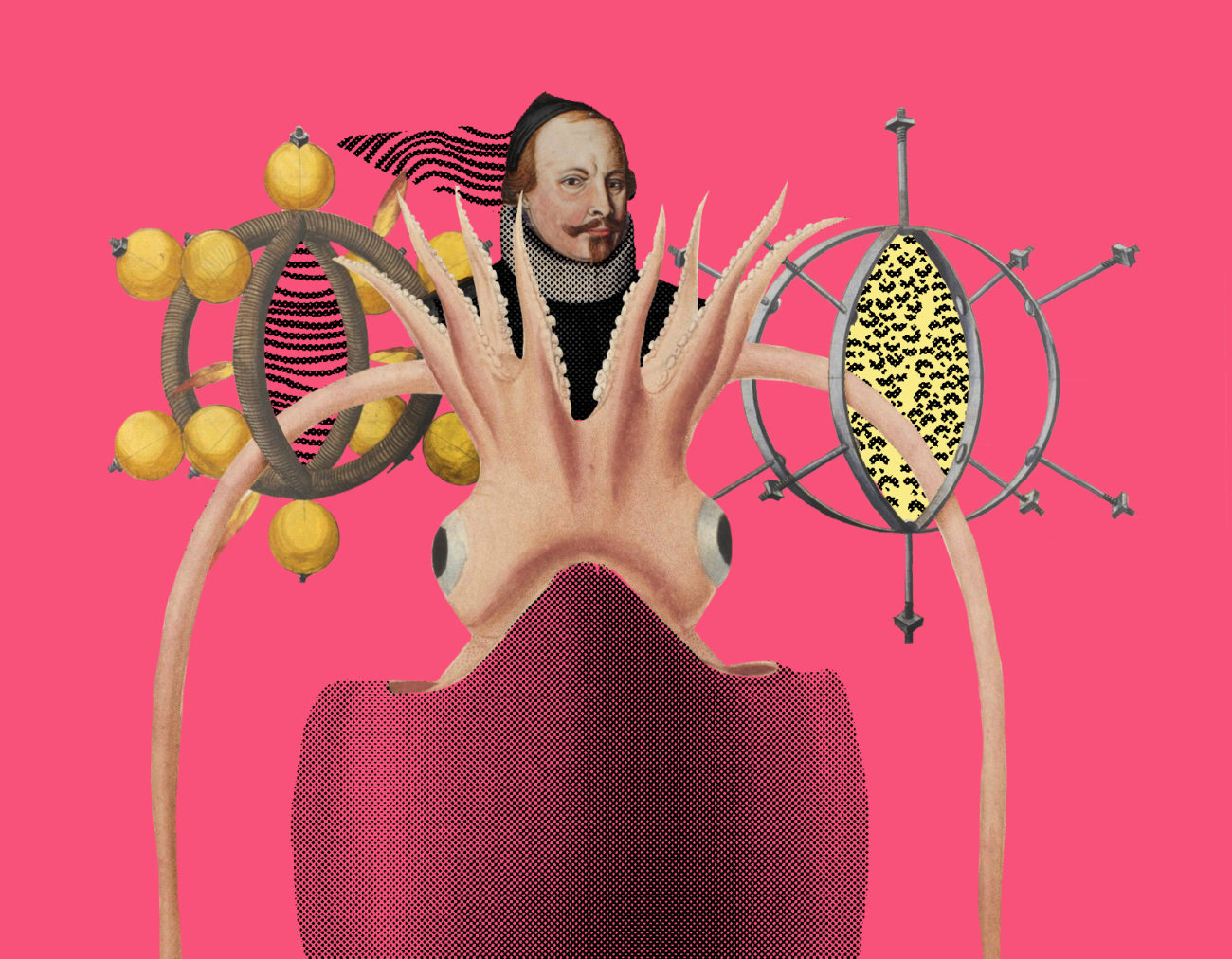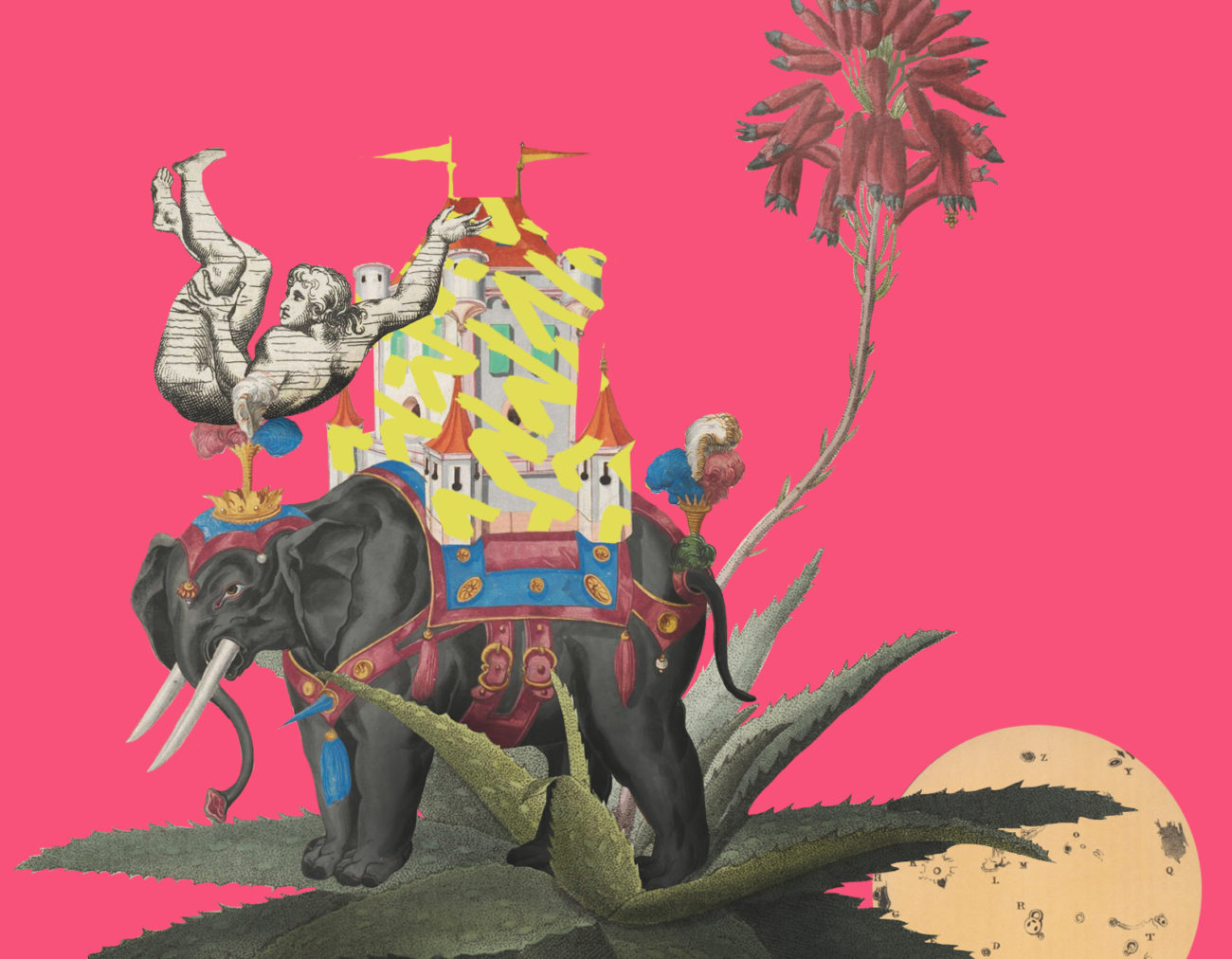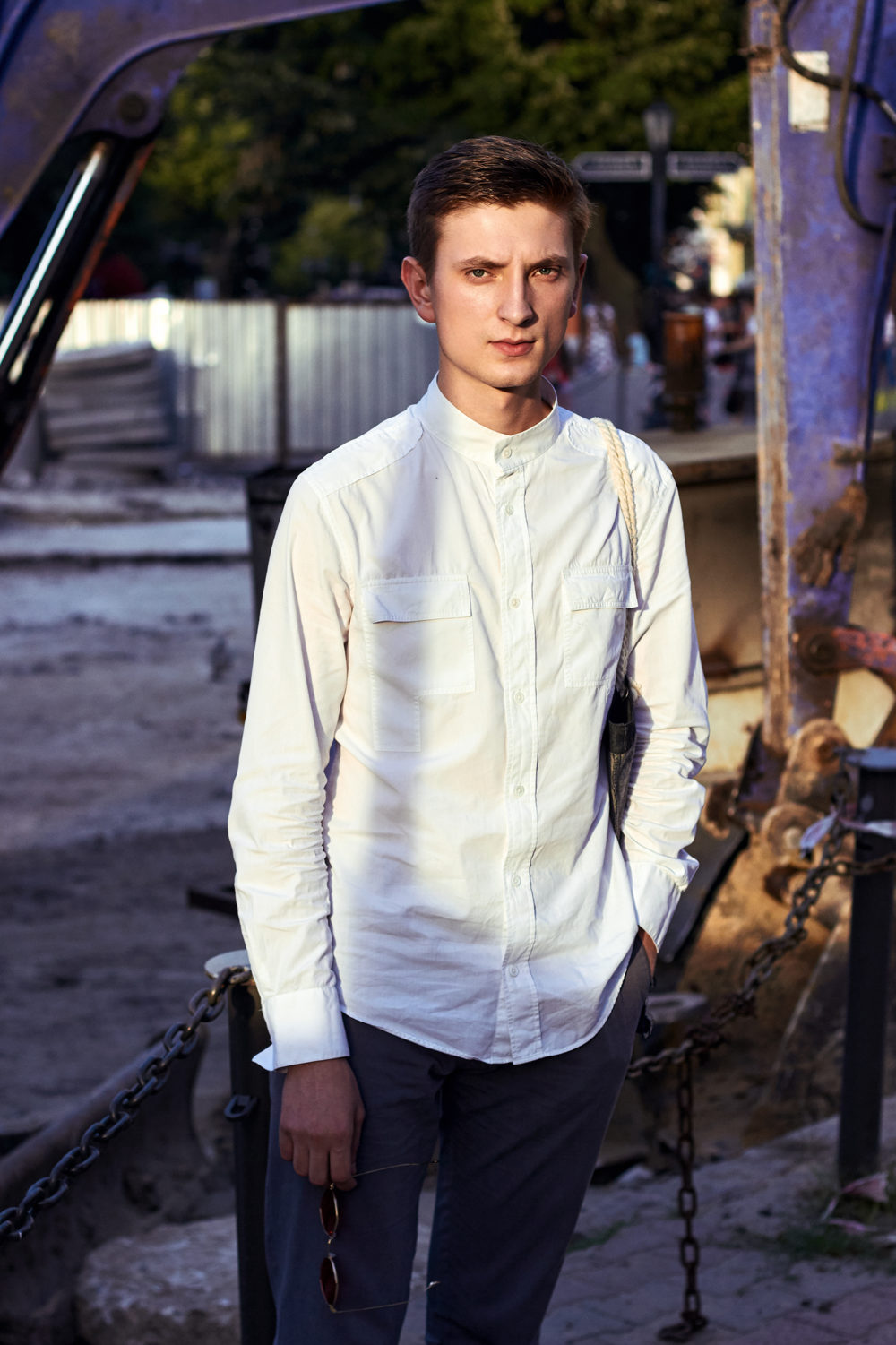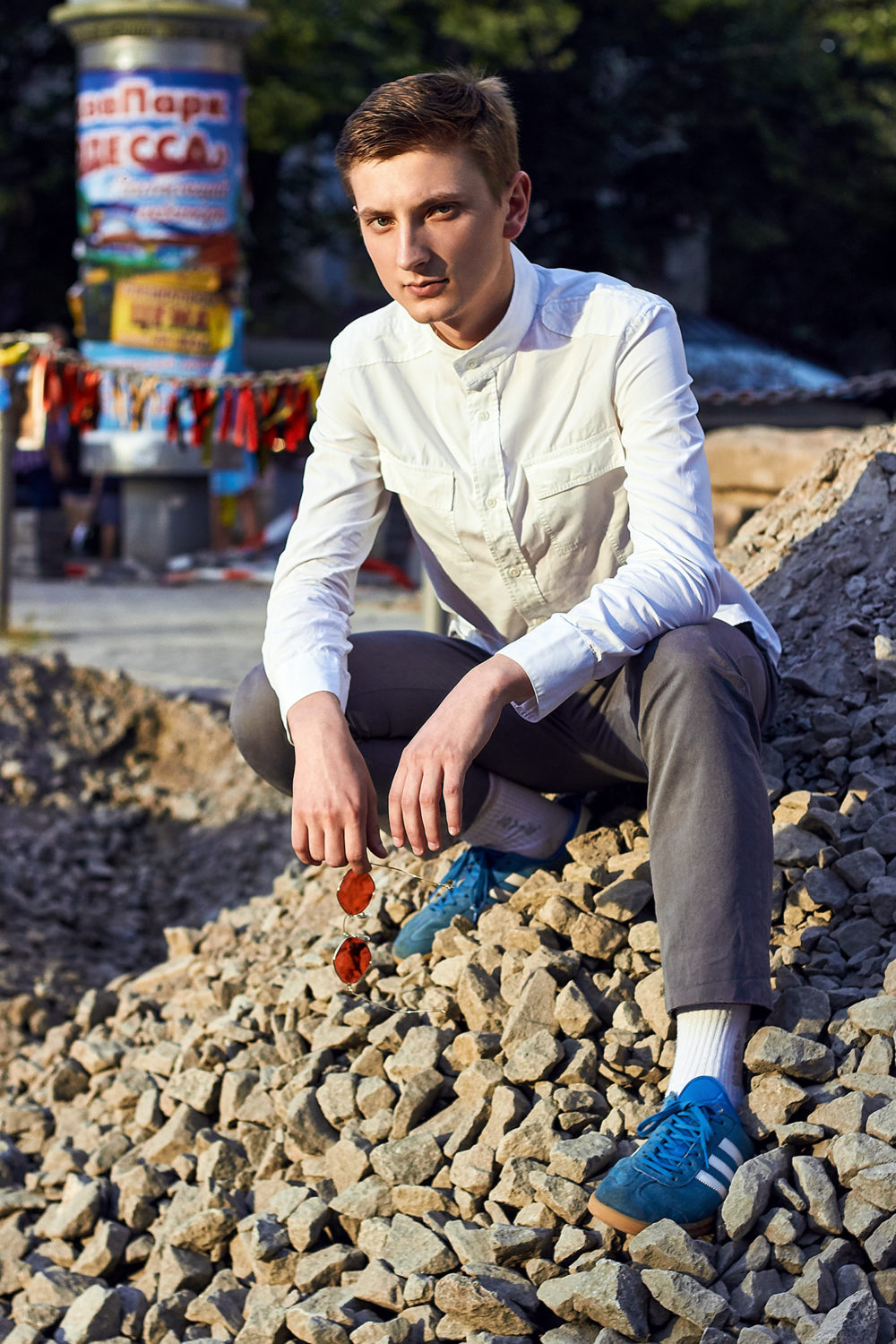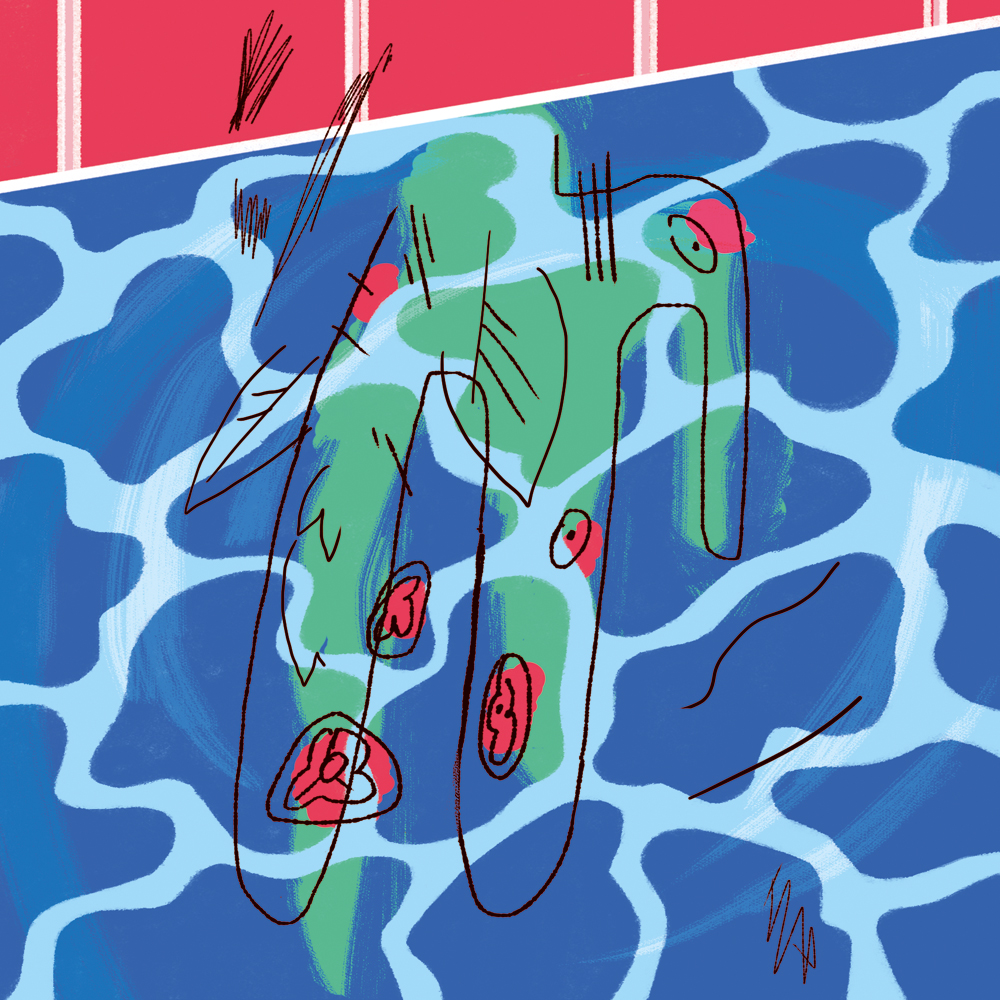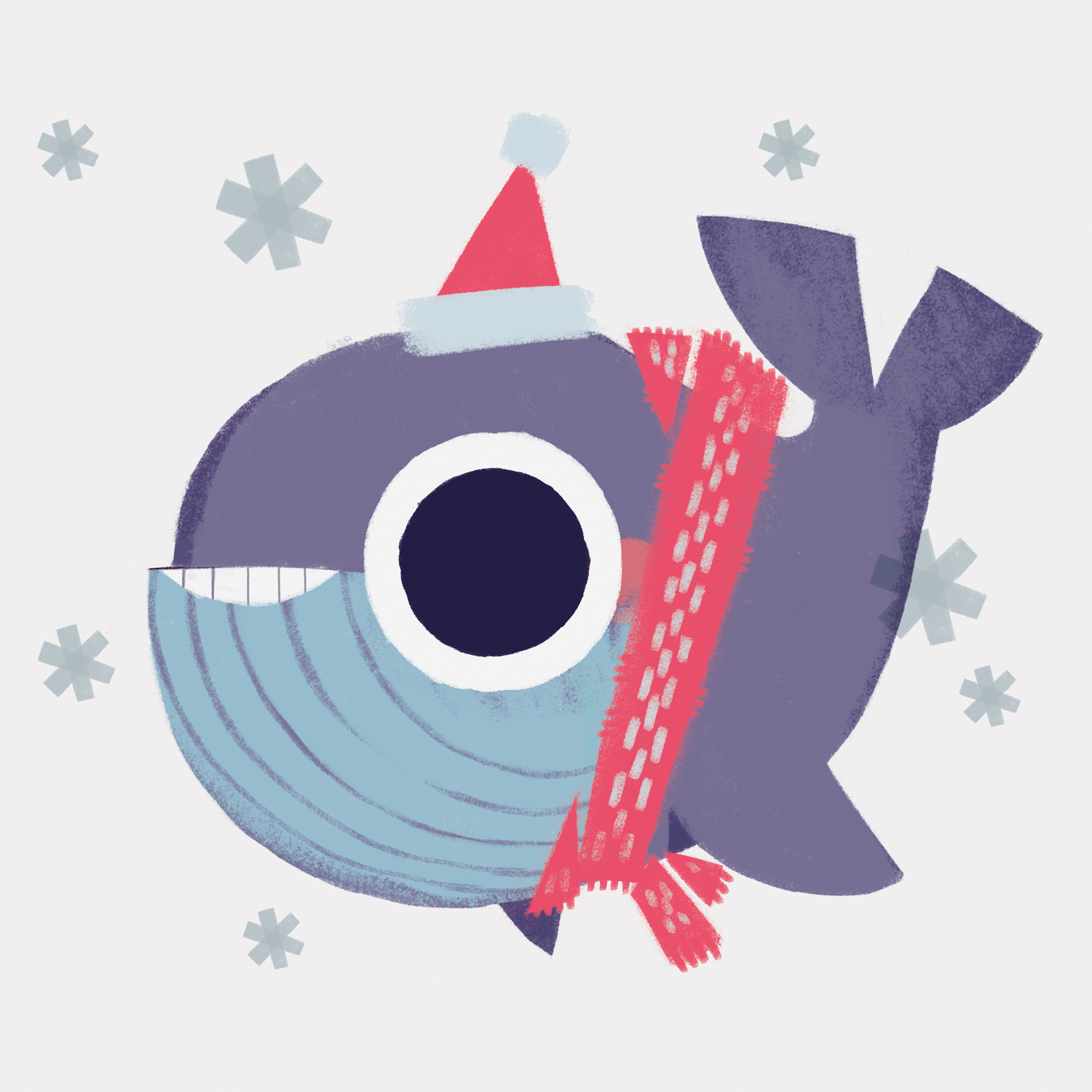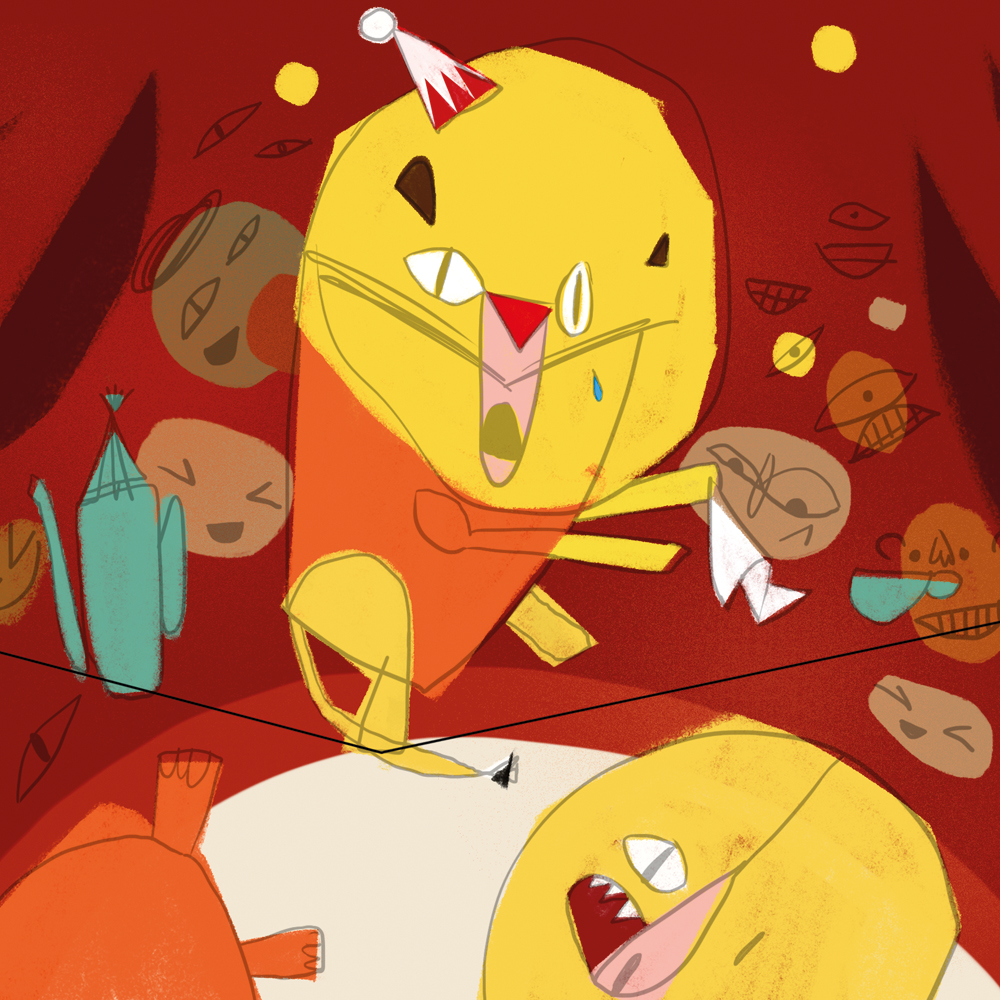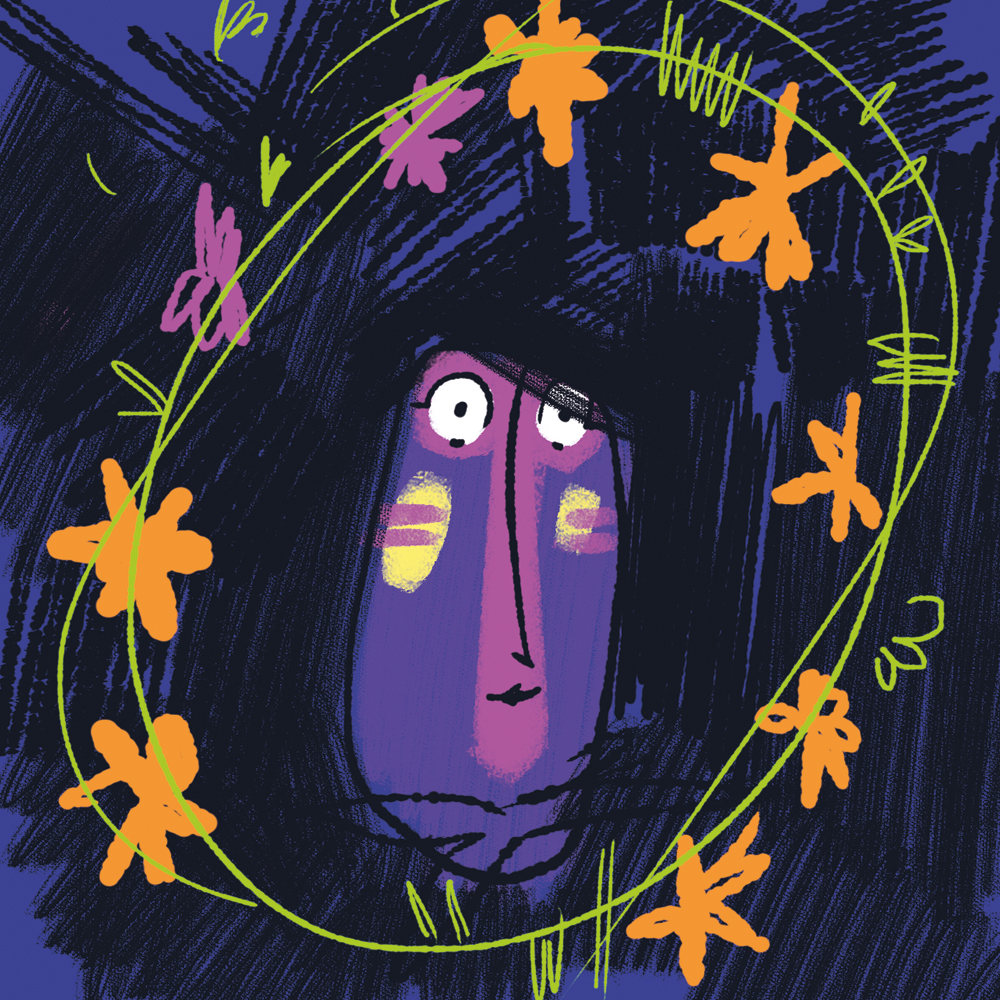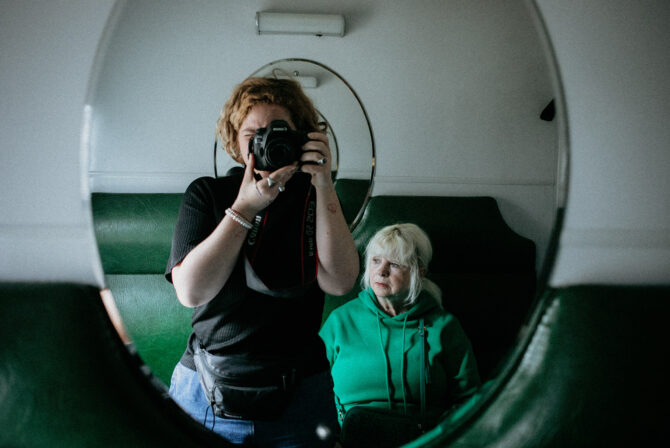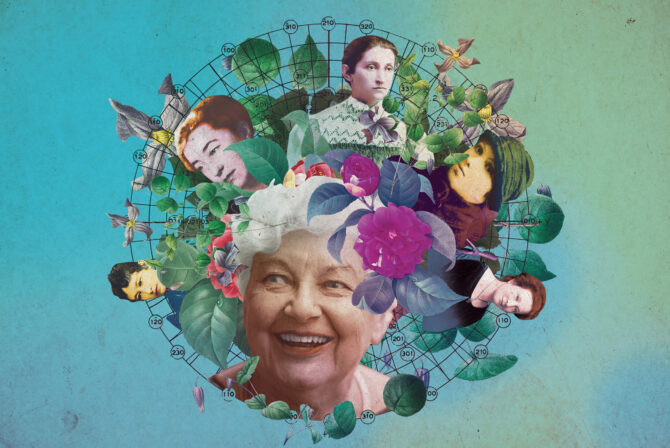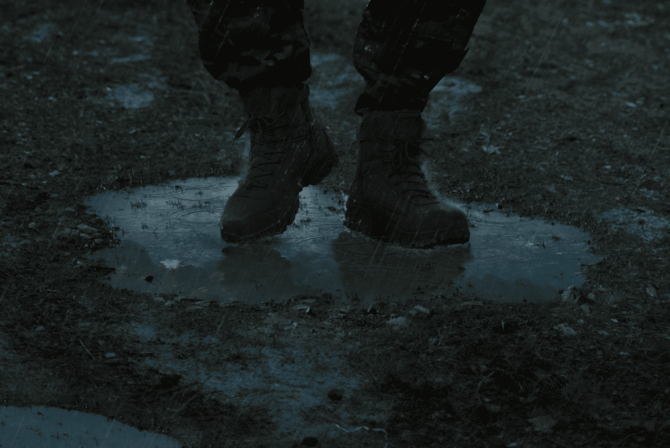Odessa-based illustrator Yevhen Velychev speaks about the joys and challenges of an illustrator ’s profession, the search for inspiration and the importance of harmony.
[This article is published in partnership with Odessa Speaks English, an initiative whose main goal is to encourage the development of an English-speaking social and cultural setting in Ukraine generally and Odessa specifically.]
Career beginnings
I was born in Odessa and attended a regular public school. As a child, without thinking too much about it, I would always be drawing or crafting something, collecting wonderful little objects like stickers and toys… Unusual, but aesthetically pleasing things.
At school, I never thought about who I wanted to be when I grew up. But when the time came to make a decision about what to do with my life, there was no hesitation — I decided to apply to an art school or college. I felt that it was the best possible path and that it must be so.
Family influence
My family was always artistically inclined. My mother loves classical art. My grandfather was a draftsman-designer, and his brother was a painter. You could say that I come from a very creative family.
If this had any influence on me, it was only on an emotional level, not a practical one. At one point, my mother wanted me to become a dentist. (Laughs) But I never wanted to pursue that profession.
In fact, my mother probably didn’t always want me to be an artist. There is a stereotype that artists are poor, shabbily dressed people who can’t make a living. Nevertheless, she never argued with me and showed support for my art-crimes to the best of her ability. (Smiles)
I realized who I wanted to be a few months before entering college, right before the beginning of the preparatory courses. At 14, almost by chance I found myself at an art school. I just came there, drew a little and was advised to sign up for a course at Odessa’s Grekov Art College. Back then, I didn’t even know such colleges existed.
There was no doubt: if I was going to college, it could only be that one. I left school after 9th grade, attended the preparatory courses and was accepted to the department of painting and design.
The profession of a painter-designer is rooted in the Soviet times — the job meant designing and painting shop windows, public transport stops and other industrial objects. This profession combined graphic design, product design, architecture, painting and drawing, everything… This concept had a great deal of influence on how I am working today.
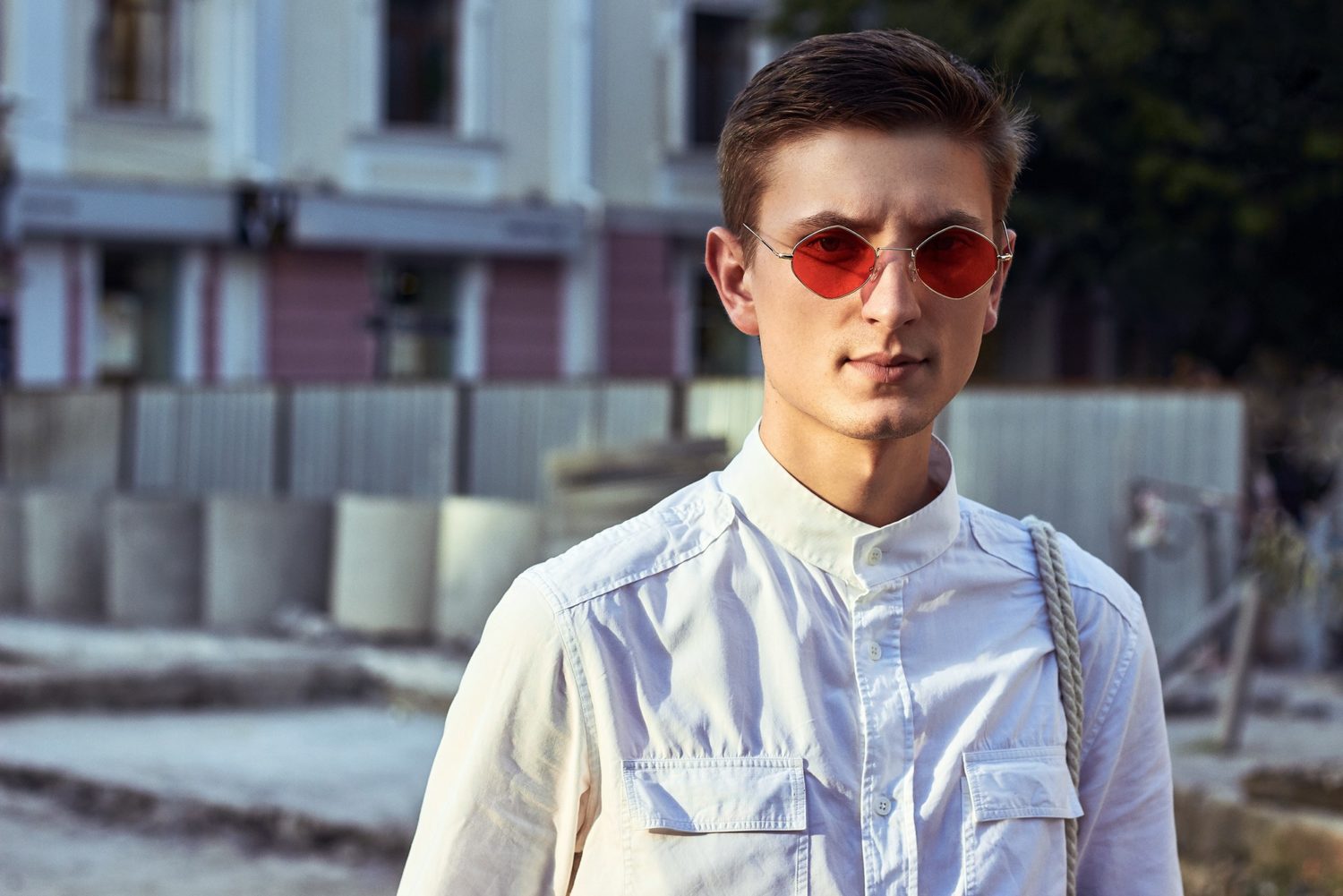
Apart from architecture and sculpture, I also do a bit of everything: contemporary art, academic painting, graphic design, illustration, film production design.
Working in different genres
I used to think that working in different genres was wrong. The more time you spend on one pursuit, the less time you have for another. You can’t develop balance and harmony as an artist, while at some point you will have to make a choice anyway.
For a long time I was troubled by these questions and couldn’t find the answers. But eventually I realized that I should stop worrying and trying to separate the genres. This was very helpful for my work, helping me to gain a greater understanding of various styles of visual art, with different approaches enriching one another.
In this way, you are often faced with complex challenges, but that also implies constant evolution and growth. You learn to apply a comprehensive, integrative approach to problem solving.
Now, I am highly productive. I can’t say that I devote a lot of time to one genre, and too little to another. I approach a film production and a small illustration with the same level of seriousness and responsibility. I simply do my best to deliver the highest possible quality in every project.
The illustrator’s profession
You have to be psychologically prepared for this job. Illustration is not really the same as drawing or painting. Illustration is an entirely different form of visual art.
First of all, illustration is related to design: in both cases, there is a specific task that needs to be accomplished. Sometimes an illustration raises a problem, sometimes — it gives a solution. Illustration is art — it should push and provoke, ask and answer questions, at the same time leaving something unsaid.
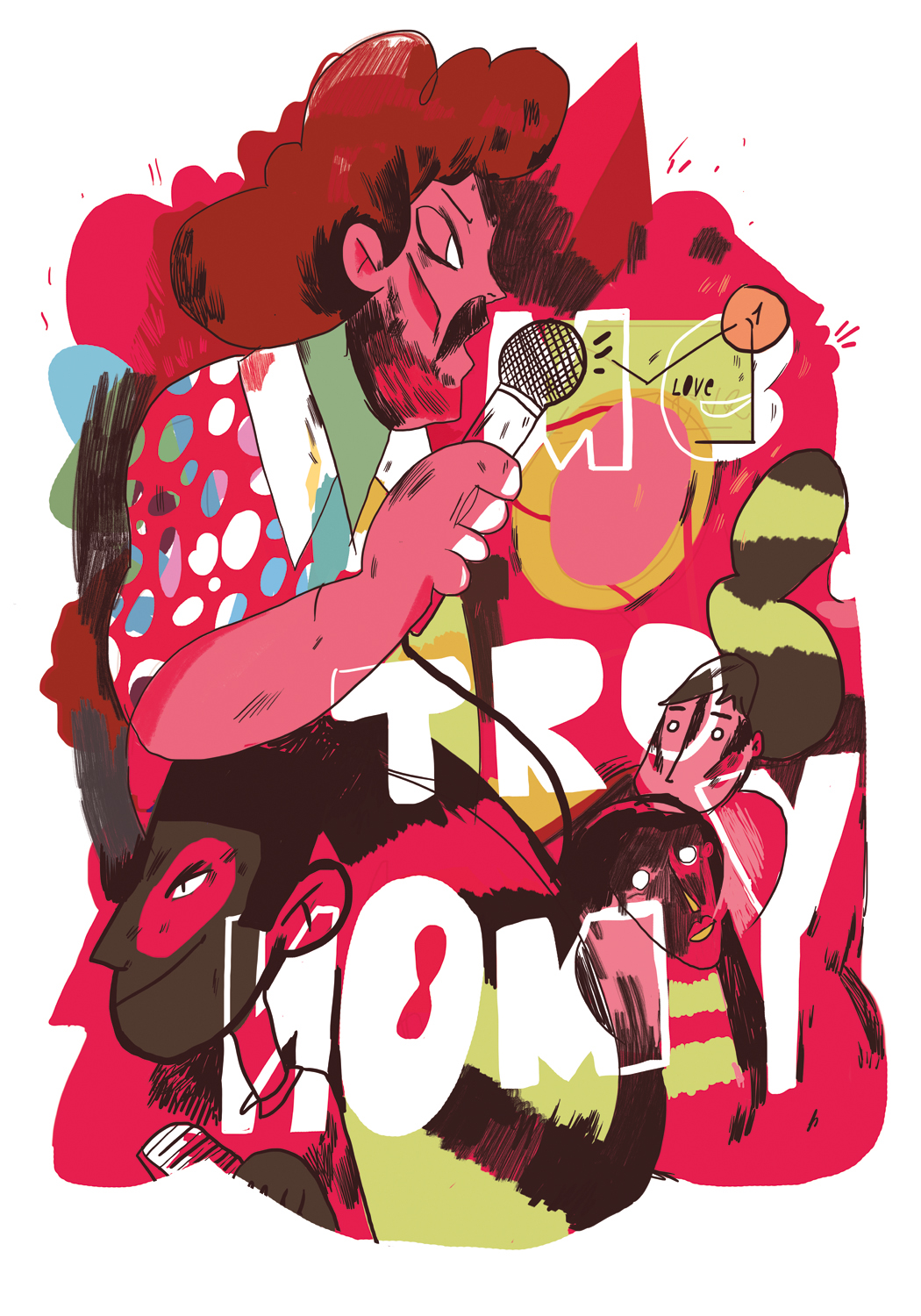
When you first start working with illustration, it is difficult to take all that into account and determine which elements are most important in which situations — when there is a narrative involved, for example, not to mention stylization and the process of crafting the image.
At the beginning, many artists take the amateur track, lacking an understanding of all the requirements. Eventually, many leave illustration because they lose interest or think that this art form is not in demand. Actually, quality work will always get noticed, valued and referred.
The difference between high-quality and poor-quality work
Everything depends on content. An illustration has to be harmonious, like a poem, a haiku.
As a child, I dreamed of working in animation. Now I find myself returning to this idea. But at one point I realized that it was much harder and more interesting to tell a complex story with a single image.
Through my work with cinematography, I learned about graphics, drama, conflict, etc. All this can be adapted within the space of an illustration. One image can tell a whole story — if it doesn’t, the viewer is reluctant to interact with it.
The same thing applies to stylization. Often, beginner artists communicate messages through works that look more like academic painting than illustration. Without stylization, the image does not have make an effective impression.
When you find it difficult to appreciate or “communicate” with the an image, that means it was “written” in a foreign language. Illustration should engage you in a dialogue
Illustration is like a poem because when you work on it, you transform a verbal language into a visual one. When reading a text, you will always notice typos or grammatical errors, right? The same goes with illustrations. When you find it difficult to appreciate or “communicate” with the an image, that means it was “written” in a foreign language. Illustration should engage you in a dialogue.
Illustration is a commercial trade, so it’s important for it to fulfill its objectives.
Most exciting projects
Often, I dislike my finished works because I know that they turned out differently from what I initially planned. But I always challenge myself in new ways, I improve myself. Therefore every project I start is interesting to me. I live in the present moment.
I like moving forward, figuring out my weaknesses so I can work on them, learning new things. This process is comparable to practicing yoga. When you have difficulty achieving an asana, you must overcome yourself and accept the pain to open new emotional depths.
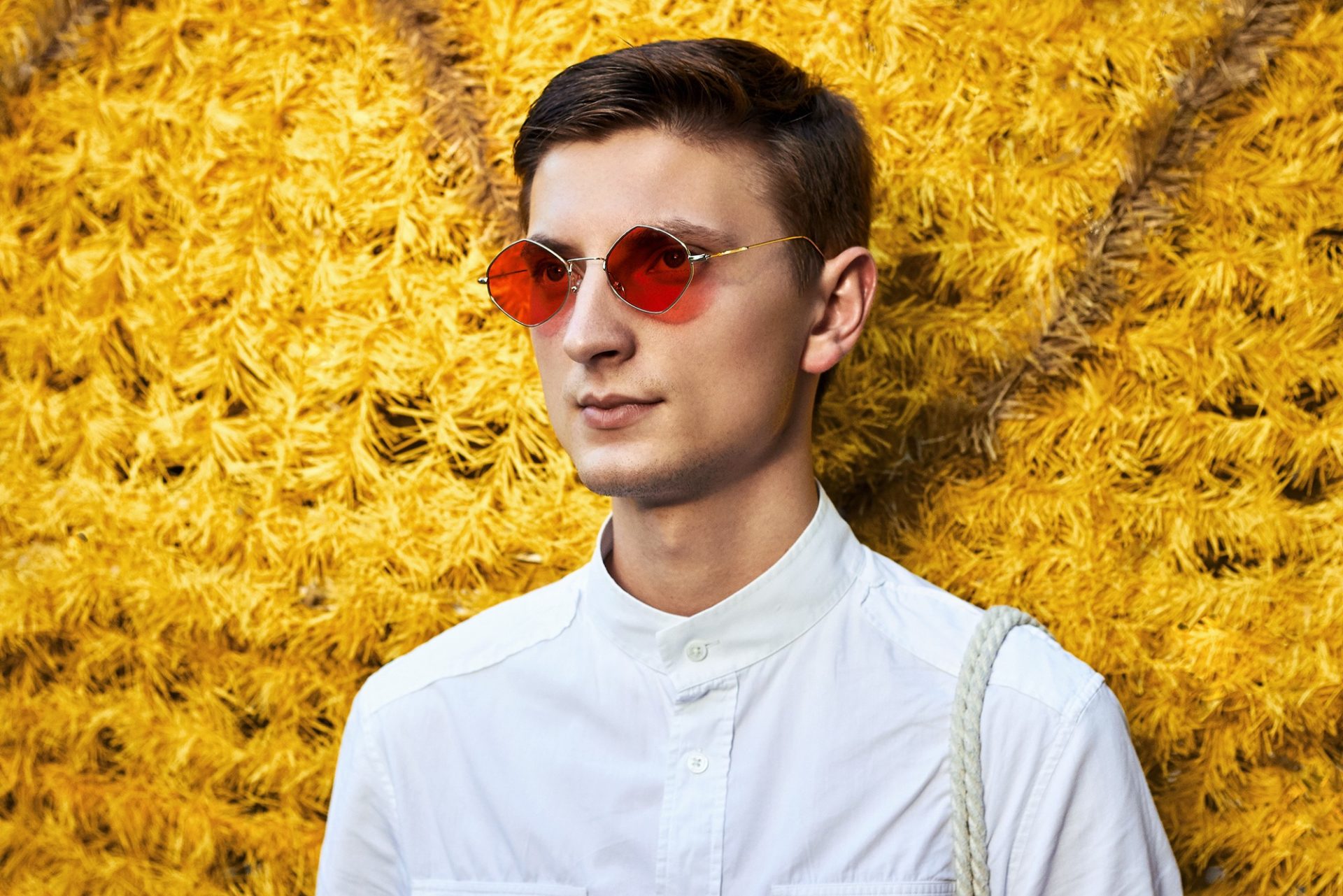
So I can’t say that I have a favorite project, because after some time, I will see it as a project that has passed and where I see certain mistakes. It doesn’t mean that all my previous projects are flawed. It’s just that I completed them and don’t feel challenged by them anymore. I prefer projects that I am doing here and now.
Like everyone else, I started with small, simple projects like designing business cards. Every year, the projects became more difficult and complex. In 2012, I accepted an offer to work with the clothing brand “Jealousy” by designer Tanya Muinyo, creating prints for her collections.
There was a poster for Gesheft market. It doesn’t contain an illustration — in that case, I wanted to experiment with other forms. After that, there was an interesting story with Silpo supermarket. I designed illustrations for their line of baby products called Ricki Ticki. For that one, I was cutting illustrations out of paper.
I was interested in working with polymers, discovering the qualities of color, photo session and retouching. I began to set new goals for myself, combining collage and texture in illustration.
Designing a poster for the movie “Star Wars” was quite an interesting experience, and it won the 3rd prize at Cinema Posters Awards.
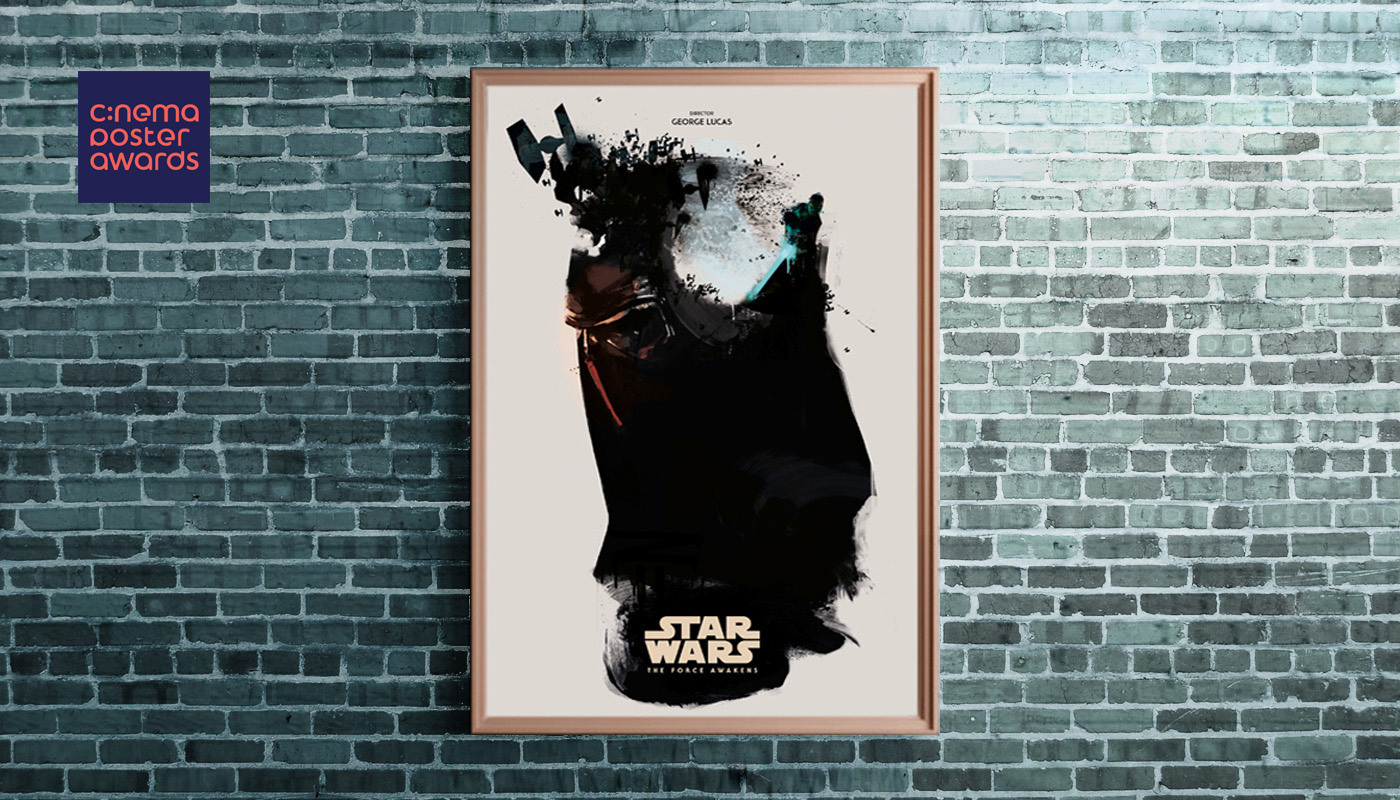
Right now I am working on an interesting project with PinchukArtCentre — “Letters of art”. The challenge of this project is to represent complex artistic terms into carefree, playful illustrations. I am excited to show diverse art forms through letters, textures and shapes.
I also work with The Village Ukraine magazine, doing article layout and illustration. In this project I combine contemporary art and illustration, whereby contemporary art enters the news feed. I am very comfortable working in a project like this because it involves transmission of news in a visual language, but it has to be done quickly, and that presents a certain difficulty.
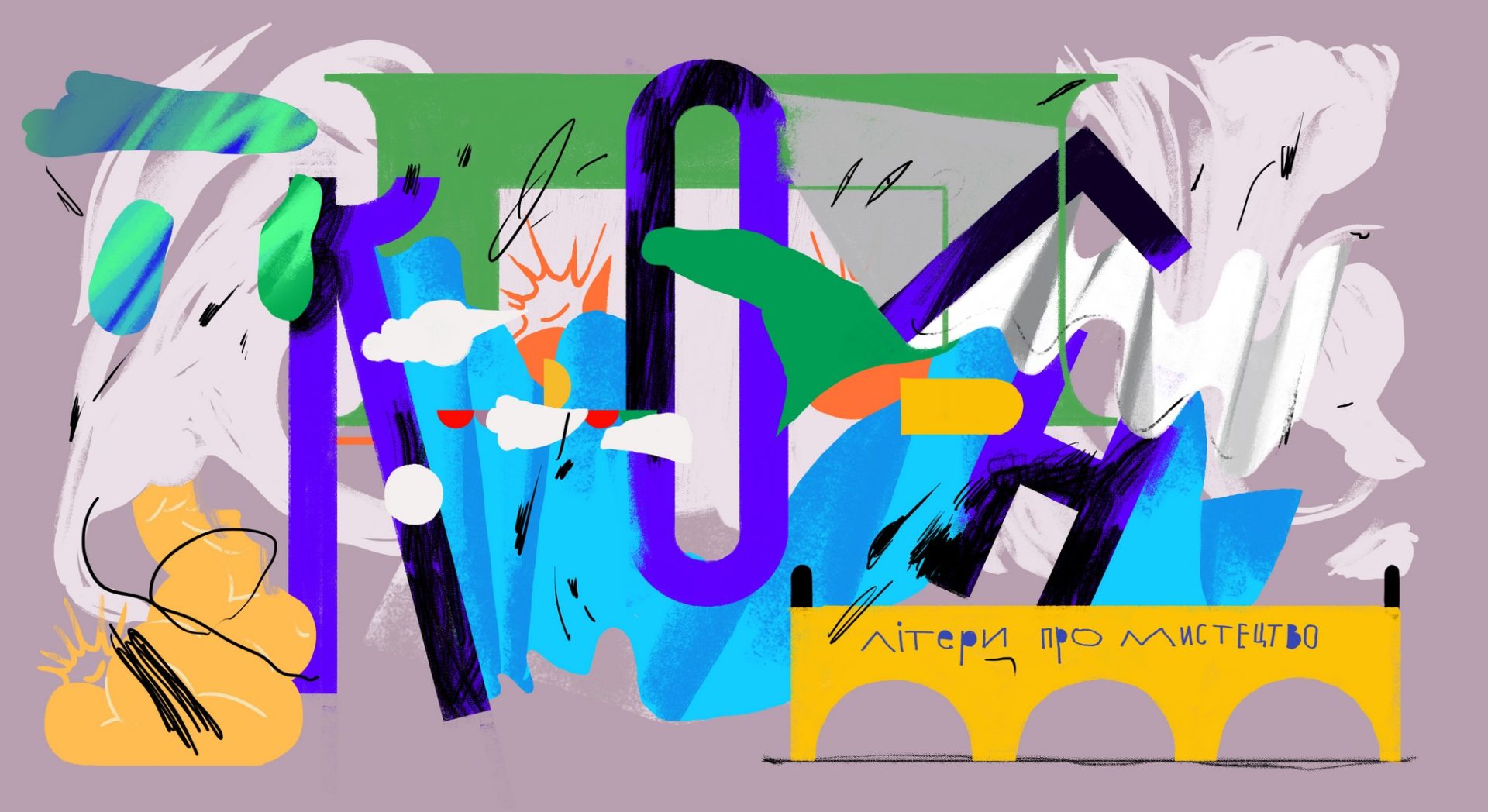
In this format, I can create up to three-four illustrations per day. The difficult part is to make faster decisions and be more clear about the end result. Usually, you can think, experiment, paste, photograph, searching for the right texture and material to get the emotion across. But working in news projects requires you to make instantaneous decisions and be aware of the needs of your target audience. Sometimes I can create fewer illustrations for a publication if I see I am running short on time. The most important thing is not to sacrifice quality.
Greatest successes and failures
Lately, I have been actively participating in festivals and contests, and the more I do, the more I notice that a relaxed approach is the best guarantee of victory. I have no explanation for it, but that’s how it has worked for me every time. There were situations when I submitted a piece to a contest, and completely forgot about it — later discovering that I had been awarded the first prize. This is both a success and a failure. (Laughs)
Once I took part in a contest for a limited edition beer label. I didn’t have much time to think about the look, so I created the design rather quickly and sent it off. In the end, my label won.
According to the rules of the contest, the winner would be granted a scholarship for studying at the British Higher School of Art and Design in Moscow. As I was not a very active Facebook user back then, I missed the message about the award from the contest organizers. For a couple of months they were sending me messages but I didn’t respond, so they gave the scholarship to another participant. It was not just the news of winning that I missed, but the chance to study at a design school.
A similar thing happened with the Comfy Art Prize, a contest for young artists. I just sent in my work without much ado, and it got short listed. I have a lot of stories like this.
Also, I remember shooting videos for the IMAX movie cinemas within the framework of Molodiya social advertising festival. The idea was to create two videos about visitors’ behavior in the cinema. I was appointed as art director of the project. Both videos received prizes — the first and the third. It’s great coming to IMAX and seeing your videos there.
Looking for creative inspiration
I find inspiration in social drama. I can spending ten minutes walking around a city’s residential district, just looking at five-story buildings, and be inspired for the next work.
I am keen on observing people’s behavior, their decision-making process. This could be a situation in the market, when someone chooses tomatoes and cucumbers, or someone sitting down at dinner and not knowing which utensil to pick up first.
Also, I find it helpful to pose questions to myself. Things like: how people from different social circles perceive art, how society is developing in the space era, how is the planet changing, and so on.
Quality cinema and live music are always inspiring. The Depeche Mode concert in Kyiv has given me creative energy for a whole year. Lars von Trier’s “Dancer in the Dark” made such an impression on me, that I began seeing life in a different way.
The virtues of an artist
An artist should be a philosopher and pose questions, both to him- or herself and to the world. This might sound pretentious, but I think we should all ask questions: why, how, what for, what kind of society we live in at the moment, what is the function of religion, what is one’s place in the world…
An artist should be a researcher of a society, both sociologically and psychologically. There is no other way to deal with contemporary art or design, especially since the latter is called upon to improve the quality of our lives. Therefore it is important to observe the shortcomings of the world and ameliorate them with creativity and art.
The meaning of success
Let others determine whether I am successful or not. (Smiles) Success is a relative term. When you are genuinely in love with what you are doing, you don’t need to dwell on success. I have achieved certain results already. Are they sufficient to claim that I am successful? I’m not sure. I believe that success is when you have flown to the Moon, swam in the ocean and tamed an elephant. (Laughs)
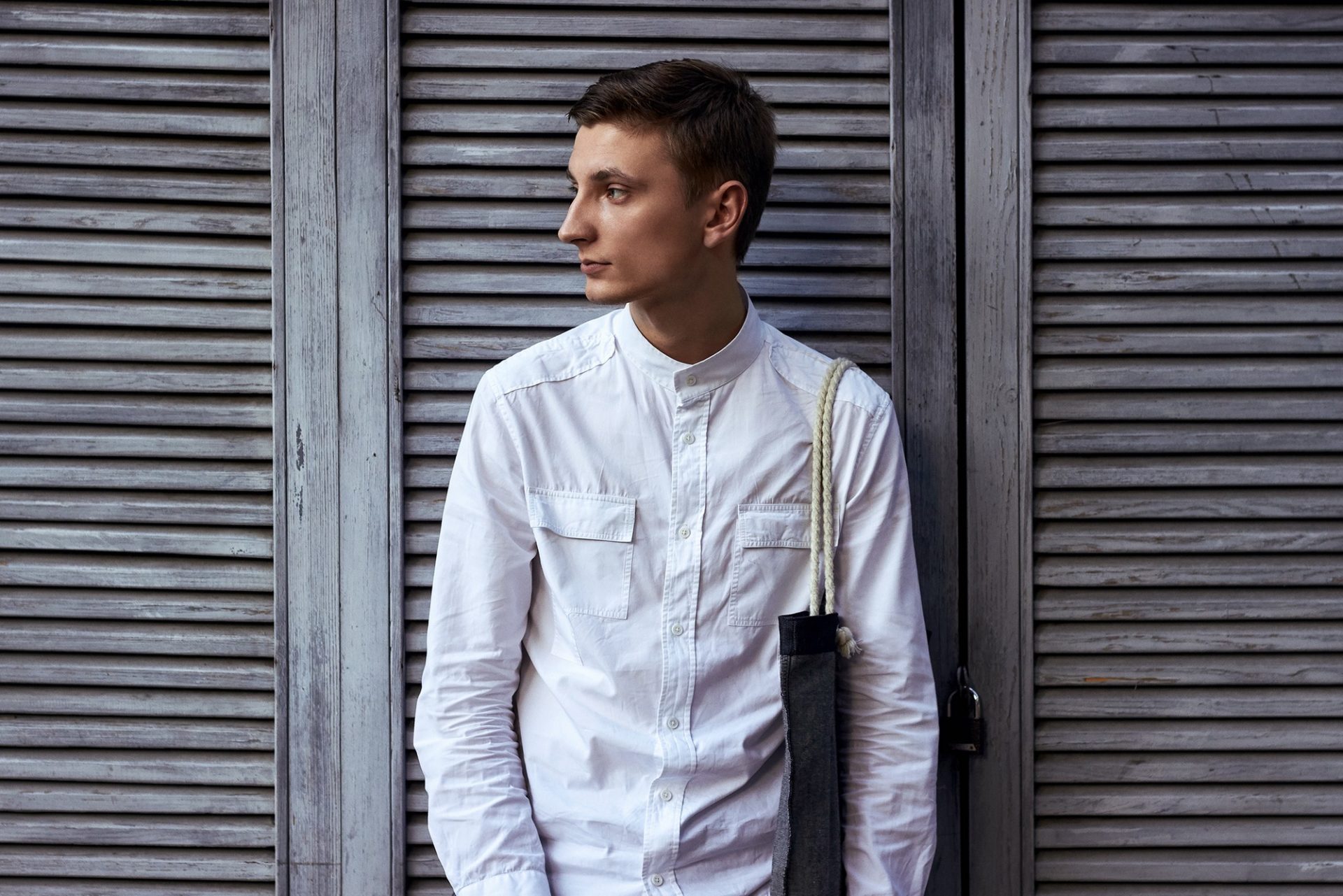
In my opinion, success is when many people are exposed to your art, when they understand the context of what you are creating. I want my work to encourage people to think in a new way, even better — to encourage change in their lives.
I am lucky to work with big companies. To some extent, that could be considered a success. I am glad that my art works can be seen by many people. Whether they are perceived the way I intended — I do not know yet.
Plans and dreams
I am dreaming of a global project that would conduct research on the human brain by means of visualization. Perhaps, in 20 years I will create my own film. Or write a book in drawings.
I want to travel the world and discover my perfect place. I would like to see the future abstractly, because now I feel like I see it too literally. I don’t want to be held captive by the present time. I will live and adapt to new times and challenges.
I want my work to encourage people to think in a new way, even better — to encourage change in their lives
Through their lives, people study, work and retire, but I want to combine everything, to live a full life rather than a series of stages. The future is where we are now. If we want to influence the future, we must start acting now. I can’t predict what I will see in 10 seconds and how it is going to change the way I perceive reality.
I do not wish to make predictions. I just hope that everyone will live in harmony — with themselves, but also striving toward harmony with nature. In the modern world, there is a constant impression of surrounding chaos. Chaos can be a useful creative energy too, but I wish there was a bit less of it. Or, at least, that is was always justified.
Translator — Olga Zaporozhets, OSE
Editor — Katya Michaels
